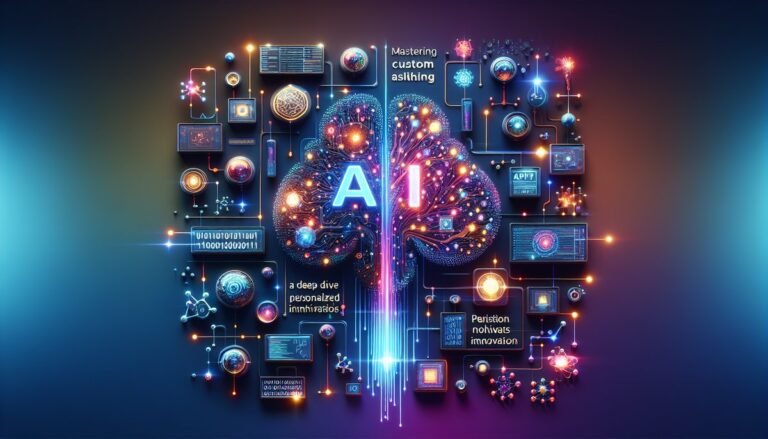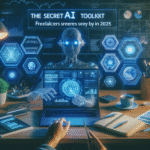In an era where technology continuously reshapes the educational landscape, the introduction of Microsoft Copilot Classrooms heralds a significant advancement. Imagine a classroom not just filled with students and teachers but also accompanied by a digital “thought partner.” This is now possible, thanks to Microsoft’s Copilot, powered by OpenAI‘s cutting-edge GPT-4o. As schools look to integrate AI into daily learning, Microsoft’s latest venture promises to redefine how students engage with their studies, turning AI into an indispensable classroom ally.
Revolutionizing the Learning Experience
Gone are the days when technology in education was limited to plain old computers and basic software. The introduction of Microsoft Copilot into classrooms transforms AI from a passive tool into an active participant in the learning process. This AI-driven “thought partner” is not just about providing answers; it’s about fostering a deeper understanding and sparking curiosity among students. By leveraging the advanced capabilities of GPT-4o, Copilot can assist in problem-solving and creative thinking, two skills essential for navigating the complexities of the modern world.
The Role of Copilot Chat in Education
Central to the Microsoft Copilot Classrooms initiative is Copilot Chat, a feature that utilizes the robust language processing abilities of GPT-4o. Imagine a student struggling with a complex math problem or a challenging literary analysis. Instead of feeling lost, they can engage in a conversation with Copilot Chat, which guides them through the problem-solving process, offering hints and explanations that prompt independent thinking. This interactive approach ensures that learning is not just about memorizing facts but about developing critical reasoning skills.
A Partnership Between Educators and AI
While the introduction of AI into the classroom might raise concerns about technology replacing human educators, Microsoft envisions Copilot as a collaborator rather than a competitor. Teachers remain the cornerstone of the educational experience, with Copilot serving as a supportive tool that complements traditional teaching methods. This partnership allows educators to focus more on personalized instruction and less on administrative tasks, ultimately enhancing the overall quality of education.
Preparing Students for a Tech-Driven Future
As technology continues to advance at an unprecedented rate, preparing students for a future where digital literacy is paramount becomes increasingly important. By integrating Microsoft Copilot into classrooms, schools are taking a proactive step in equipping students with the skills necessary to thrive in a tech-centric world. This initiative not only enhances learning outcomes but also ensures that students are adept at using AI responsibly and effectively.
In conclusion, the introduction of Microsoft Copilot Classrooms marks a significant milestone in educational technology. By leveraging the power of GPT-4o, this initiative transforms AI into an invaluable “thought partner” that enhances both teaching and learning. As schools embrace this new era of education, the possibilities for innovation and growth are limitless, paving the way for a future where technology and education go hand in hand.
Revolutionizing Education with Microsoft Copilot
As digital transformation continues to reshape educational landscapes, Microsoft Copilot Classrooms emerges as a pioneering solution. Designed as a “thought partner,” Microsoft Copilot leverages OpenAI‘s latest model, GPT-4o, to enhance the teaching and learning experience. This integration marks a significant step in utilizing Artificial Intelligence to support educators and students in unprecedented ways.
Empowering Educators with Innovative Technology
For teachers, Microsoft Copilot offers more than just a digital assistant; it provides a collaborative partner that can streamline administrative tasks and enrich lesson planning. Imagine a scenario where a teacher is crafting a history lesson about the Industrial Revolution. Copilot can assist by swiftly generating relevant content, suggesting engaging activities, and even creating quizzes. This allows educators to focus more on interactive teaching rather than time-consuming preparations.
Furthermore, Copilot’s ability to provide instant feedback and alternative teaching strategies can be invaluable. For instance, if students struggle with a particular concept, Copilot can offer fresh approaches or supplementary materials, ensuring that no student is left behind. Such dynamic support can significantly enhance a teacher’s ability to adapt lessons to diverse learning styles and needs.
Enhancing Student Engagement and Learning Outcomes
In the context of student learning, Microsoft Copilot serves as a personalized tutor. By leveraging GPT-4o’s advanced capabilities, Copilot can engage students with interactive, real-time dialogues that make learning more immersive. Consider a hypothetical student working on a project about renewable energy. Copilot can guide their research by providing up-to-date information, suggesting credible sources, and even posing thought-provoking questions to deepen understanding.
This personalized interaction not only fosters a more engaging learning environment but also encourages critical thinking and problem-solving skills. As students interact with Copilot, they learn to refine their questions and explore topics more thoroughly, which can lead to improved academic performance and a greater love for learning.
Addressing Challenges and Ethical Considerations
While the integration of AI in classrooms offers numerous benefits, it also raises important ethical and practical considerations. One significant concern is the potential for over-reliance on technology, which might inadvertently diminish critical thinking skills if students and teachers become too reliant on AI-generated solutions. To mitigate this, educators should ensure that Microsoft Copilot is used as a supplement to, rather than a replacement for, traditional teaching methods.
Additionally, data privacy remains a crucial issue. Schools must enforce stringent data protection policies to safeguard sensitive student information. Microsoft has committed to maintaining high standards of privacy and security, but continuous vigilance is necessary to protect against potential breaches.
Looking Ahead: The Future of AI in Education
The introduction of Microsoft Copilot in classrooms is just the beginning of a broader trend towards AI-assisted education. As technology evolves, we can expect even more sophisticated tools that further personalize and enhance the learning experience. Schools and educators will need to stay agile, embracing these changes while maintaining a balanced approach that prioritizes human interaction and ethical standards.
Ultimately, the role of AI in education will depend on how effectively it is integrated into existing systems. Microsoft Copilot’s success will likely inspire other technology companies to develop similar solutions, leading to a competitive landscape that could drive innovation and educational advancement. As we look to the future, the potential for AI to transform education is immense, promising a new era of learning that is both more efficient and accessible.
Conclusion: A New Era for Educators and Students
Microsoft Copilot’s entry into classrooms symbolizes a pivotal moment in educational technology. By harnessing the power of GPT-4o, it offers a unique blend of support and innovation that can transform the educational experience for both teachers and students. As schools navigate the complexities of this new technological landscape, the focus should remain on fostering an environment where AI complements human creativity and intelligence. With this balance, the potential benefits of AI in education are boundless, paving the way for a future where learning is more dynamic, inclusive, and effective.
Redefining Classroom Dynamics: AI’s Transformative Role
The integration of Microsoft Copilot as a “thought partner” in classrooms marks a pivotal shift in educational paradigms. This development, powered by the robust capabilities of OpenAI’s GPT-4o, signifies more than just a technological upgrade; it heralds a new era of interactive learning. By embracing the potential of Artificial Intelligence, educators can transcend traditional teaching methods, fostering an environment where creativity and critical thinking are at the forefront.
The future looks promising as AI tools like Copilot continue to evolve, offering personalized learning experiences and augmenting the capabilities of teachers. However, the journey to fully realize AI’s potential in education requires a shift in mindset—one that looks beyond conventional technology applications and embraces innovative possibilities. As AI becomes increasingly sophisticated, the opportunity to harness these advancements in various educational contexts is profound. The key will be in maintaining a balance between technological integration and human-centric teaching approaches, ensuring that AI serves as an empowering tool rather than a replacement.
FAQ: How does Microsoft Copilot function as a “thought partner” in classrooms?
Microsoft Copilot acts as a “thought partner” in classrooms by assisting teachers in developing lesson plans, generating ideas, and providing real-time feedback to students. It leverages natural language processing to facilitate interactive learning experiences.
FAQ: What role does OpenAI’s GPT-4o play in powering Copilot Chat?
OpenAI’s GPT-4o underpins Copilot Chat by offering advanced language understanding and generation capabilities. This enables Copilot to engage in meaningful dialogues, respond to queries, and adapt to various educational contexts effectively.
FAQ: What are the potential benefits of AI like Copilot in education?
AI tools like Copilot offer numerous benefits, including personalized learning paths, enhanced engagement through interactive content, and efficient time management for educators, allowing them to focus more on student interaction and less on administrative tasks.
FAQ: What challenges might arise from integrating AI into classrooms?
Integrating AI into classrooms presents challenges such as ensuring data privacy, addressing the digital divide, and maintaining a balanced human-AI interaction to prevent over-reliance on technology.
Explore Further into AI and Technology’s Frontier
- Best Wireless Carplay Screens
- Ai Time Rich
- 4K Vs 2K Dash Cam Comparison
- Government Ai Job Losses
- Ai Roleplay Guide 2025
- Ai Software Engineering Jobs
- Best Sams Club Deals Prime Day






